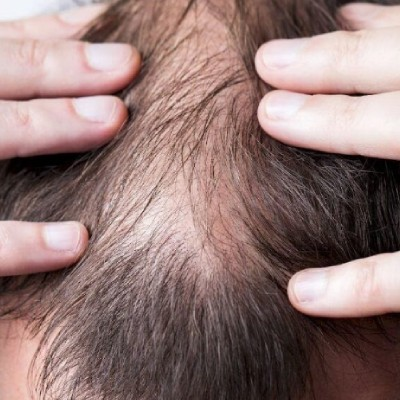Why Do You Need a High-Skilled Surgeon for Crown Hair Restoration?

20 March 2024

drgarg

Hair loss often affects men and women differently. While some people may experience a receding hairline, others may experience hair loss on the top, back of the head, or the "crown." Just as one might anticipate, skilled surgeons must adopt a different strategy when regenerating a hairline than when replacing hair in the crown. In this post, we clarify a few misunderstandings about the crown hair restoration and explain why a highly experienced hair transplant surgeon must provide a realistic and dense-looking outcome.
Whorl Pattern in the Crown
Sure, you might get a discount, but if there's a problem, the hair doesn't grow, or it looks unnatural, the expense of having the earlier procedure corrected by a surgeon who can do the job effectively will be much more in the long run. Getting it done the first time correctly will save you money and make your hair look better. The top of the scalp experiences circular hair growth, known as the whorl or swirl, compared to the remainder of the scalp. Many common doctors can transplant hair. But skillfully placing incisions so that hair looks dense and natural is a skill that only a select group of exceptional doctors have mastered. A hair transplant surgeon must make a series of small incisions that are closely spaced and replicate the natural swirl. Even if the incisions are close together, making random cuts might result in hair growth, but it might not seem natural, impose styling limitations, and alert the public that something is wrong. Furthermore, it can be difficult to implant the real follicular units into the incisions correctly. During the implantation process, the professionals must avoid unintentionally hurting the number of grafts or the tissue around them. Find a surgeon who can execute cutting-edge crown restoration procedures by doing your research.Crown Hair Loss in Males
Male pattern baldness is when hair loss in men starts at the crown or the temples. One bald spot will develop in some males. Some people notice that their hairlines curl into an "M" shape. Until all or much of the hair is gone, the hairline may continue to recede in some males. Also Read Understanding Receding Hairline And Potential Treatments.Crown Hair Loss in Females
Androgenetic alopecia, a genetic disorder in which new hair shafts grow progressively thinner, is women's most frequent cause of hair loss. Women typically observe a wider portion and a gradual loss of volume overall, frequently with a concentrated loss of volume at the crown area. The disorder can start at any point after puberty, but because of hormonal changes during and after menopause, it frequently becomes apparent.Should You Get Crown Hair Transplant?
The crown, often known as the "vertex" or the "bald spot" in the rear of the scalp, is where male pattern hair loss frequently occurs. People frequently choose a crown hair transplant as a result. It is one of their top concerns when people come for a consultation. One can use hair transplant procedures to treat men who frequently lose hair in the crown region. Why do people inquire whether they ought to have crown hair transplants? Because before having a crown hair transplant, every patient needs to consider a few things and discuss them with their doctor.Crown Hair Restoration Timeline
The timetable for a crown hair transplant surgery is largely the same, with a few minor modifications regardless of where the hair is implanted on the scalp. Generally, hair planted in the crown may take a bit longer to grow; on average, it takes a full year and, in rare circumstances, as long as 18 months for the hair to fully develop. The recipient area will take about a week or two to heal fairly well after a crown hair regrowth treatment. Most of the time, if not always, the transplanted hair in the crown will fall out four to six weeks later. Tiny hairs without full pigment will emerge after around 3 to 4 months, though they won't all develop at once. These hairs will mature over the following few months, darken, and grow as they resemble regular hair. The transplanted hair will normally mature 60 to 70 percent after six months. The most transplanted hair will finally reach maturity after a year, though occasionally, as previously noted, it could take up to 18 months. Some "slow growers" might have their growth delayed. Also Read: Spot And Stop Baldness On The Crown!Why is a Highly Skilled Surgeon Required?

Conclusion
For a hair transplant to succeed, you must be in the hands of an expert surgeon, especially if the balding area is the crown. Our Advanced Hair Studio staff is committed to providing you with outcomes you can be proud of. Our hair transplant clinic is the tenet of excellent quality, and success rates form the foundation of our team. The experts on our staff are here to answer inquiries and schedule an appointment for you if you're interested in having a crown transplant done.Stay Updated
Subscribe to our email newsletter for helpful tips and valuable resourses
Be an influencer
Join forces with Advanced Hair Studio! Explore exciting collaboration opportunities tailored for influencers. Let's redefine haircare together.
Connect now












